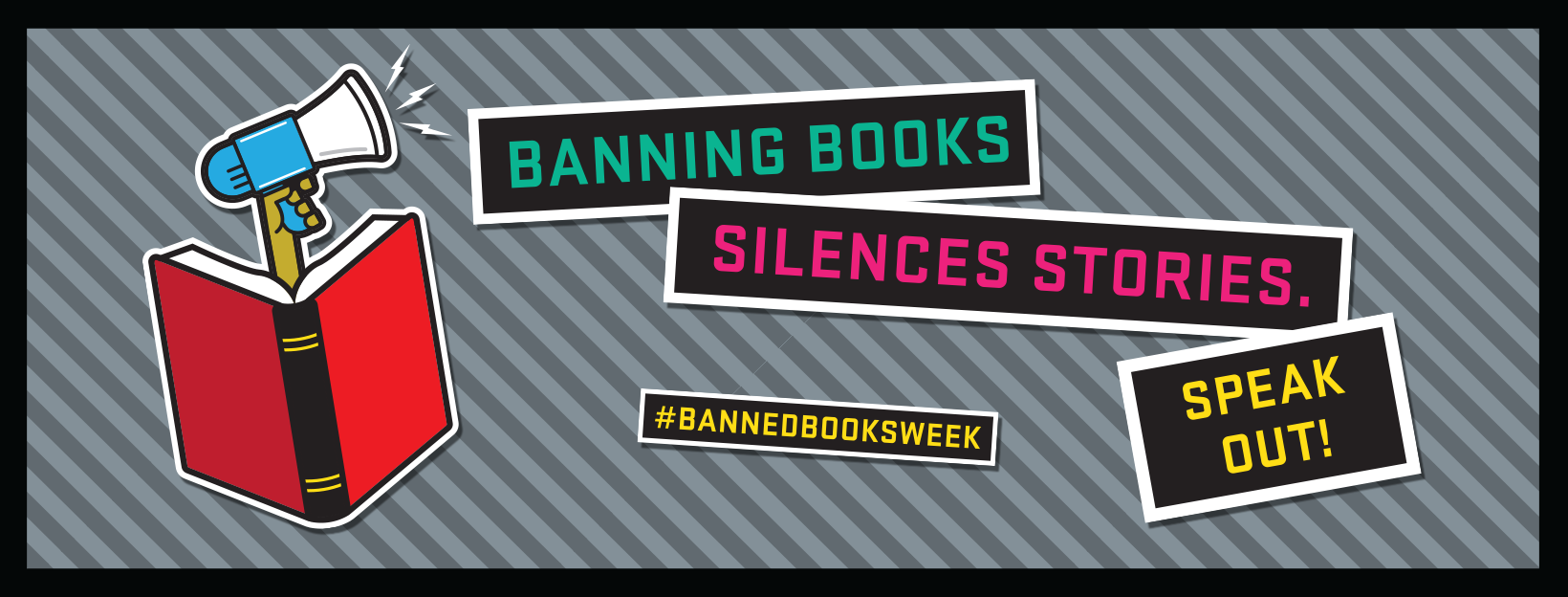 Today marks the beginning of Banned Books Week 2018; this year it is September 23-29. Held annually during the last week of September, the event “brings together the entire book community — librarians, booksellers, publishers, journalists, teachers, and readers of all types — in shared support of the freedom to seek and to express ideas, even those some consider unorthodox or unpopular”.
Today marks the beginning of Banned Books Week 2018; this year it is September 23-29. Held annually during the last week of September, the event “brings together the entire book community — librarians, booksellers, publishers, journalists, teachers, and readers of all types — in shared support of the freedom to seek and to express ideas, even those some consider unorthodox or unpopular”.
Every year, the American Library Association’s Office for Intellectual Freedom (OIF) publishes statistics about censorship attempts in U.S. schools and libraries, compiled from public challenges in the news and confidential reports submitted to the office. Usually these threats target literature but they sometimes venture beyond books, affecting DVDs, databases, displays, and art exhibits.
Below are resources and statistics about reported incidents in 2017, with a focus on the Top 10 Challenged Books of 2017. This report is a snapshot of attempts to censor books, as the OIF estimates that 82-97% of challenges remain unreported.
Censorship is a growing threat that infringes the right to read. The year 2017 saw an increase in censorship attempts and a revitalized effort to remove books from library, bookstore and communal shelves to avoid controversy.
Censorship succeeds when no one talks about it; let’s make some noise.
Top 10 Challenged Books of 2017
The ALA Office for Intellectual Freedom tracked 354 challenges to library, school and university materials in 2017. Of the 416 books challenged or banned in 2017, the Top 10 Most Challenged Books are:
1. Thirteen Reasons Why written by Jay Asher
Originally published in 2007, this New York Times bestseller has resurfaced as a controversial book after Netflix aired a TV series by the same name. This YA novel was challenged and banned in multiple school districts because it discusses suicide.
2. The Absolutely True Diary of a Part-Time Indian written by Sherman Alexie
Consistently challenged since its publication in 2007 for acknowledging issues such as poverty, alcoholism, and sexuality, this National Book Award winner was challenged in school curriculums because of profanity and situations that were deemed sexually explicit.
3. Drama written and illustrated by Raina Telgemeier
This Stonewall Honor Award-winning, 2012 graphic novel from an acclaimed cartoonist was challenged and banned in school libraries because it includes LGBT characters and was considered “confusing.”
4. The Kite Runner written by Khaled Hosseini
This critically acclaimed, multi-generational novel was challenged and banned because it includes sexual violence and was thought to “lead to terrorism” and “promote Islam.”
5. George written by Alex Gino
Written for elementary-age children, this Lambda Literary Award winner was challenged and banned because it includes a transgender child.
6. Sex is a Funny Word written by Cory Silverberg and illustrated by Fiona Smyth
This 2015 informational children’s book written by a certified sex educator was challenged because it addresses sex education and is believed to lead children to “want to have sex or ask questions about sex.”
7. To Kill a Mockingbird written by Harper Lee
This Pulitzer Prize-winning novel, considered an American classic, was challenged and banned because of violence and its use of the N-word.
8. The Hate U Give written by Angie Thomas
Despite winning multiple awards and being the most searched-for book on Goodreads during its debut year, this YA novel was challenged and banned in school libraries and curriculums because it was considered “pervasively vulgar” and because of drug use, profanity, and offensive language.
9. And Tango Makes Three written by Peter Parnell and Justin Richardson and illustrated by Henry Cole
Returning after a brief hiatus from the Top Ten Most Challenged list, this ALA Notable Children’s Book, published in 2005, was challenged and labeled because it features a same-sex relationship.
10. I Am Jazz written by Jessica Herthel and Jazz Jennings and illustrated by Shelagh McNicholas
This autobiographical picture book co-written by the 13-year-old protagonist was challenged because it addresses gender identity.
Sources: American Library Association, American Library Association Office for Intellectual Freedom.
